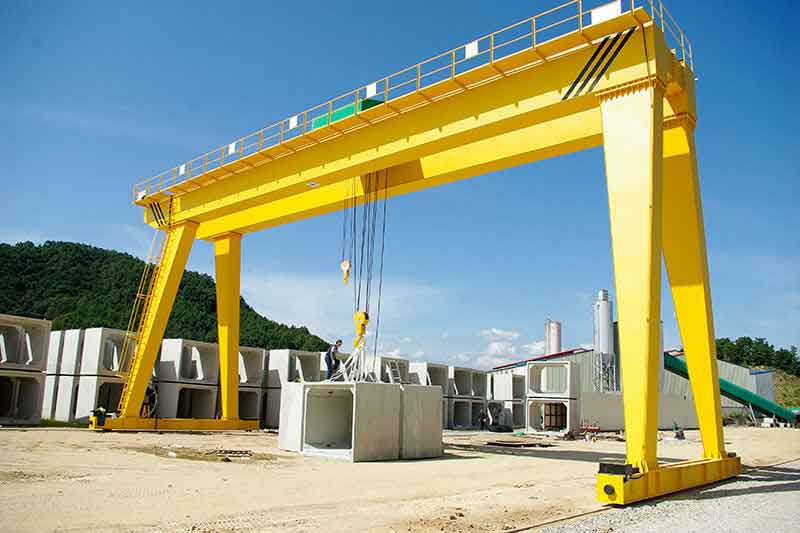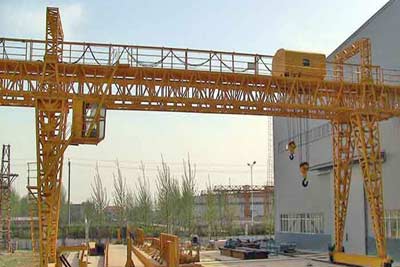Outdoor Crane Safety:What Are Wind Proof Devices for Gantry Crane?
Gantry crane wind proof devices overview. How outdoor wind affect your gantry crane? What are outdoor gantry crane windproof devices? Safe gantry crane!
Wind Resistance of Gantry Crane
The Wind Resistance Problem of Gantry Crane, it is an essential problem in crane design, the relevant safety standards and regulations, the crane's specific provisions should have wind safety devices. Natural wind affects gantry cranes working in the open air, especially near the seaside. When the wind becomes excessively strong, the lifting process should be halted. When a halted gantry crane is hit by high wind, the crane may surpass the braking force of the gantry crane’s traveling mechanism and slide, causing the lifting crane to tip over and cause an accident.
How outdoor weather affect your gantry cranes ?
The majority of gantry cranes operate outside. As a result, the external environment, particularly snow and rain, sunshine, and wind, has a significant impact on the safe and smooth operation of the gantry crane.
The following are three wind-related influences:
- Increasing the running resistance of the crane. In day-to-day design and computation, the running resistance created by wind-load on crane structure is frequently more than the frictional resistance.
- Two, wind can cause the crane to slide or roll;
- three, wind can cause the outdoor crane to overturn.The high wind will blow away the derailment, crane overturning, and so on. The reasons vary, but the most common are: brake adjustment is not in accordance with the provisions: clip rails performance is unreliable, improper measurement of non-work, and so on.

Box girder gantry crane for outdoor use
Box girder gantry crane with heigh rigidity is widley used for outdoor use for heavy loads handling. However, comparied with truss girder gantry crane, the box girder gantry crane has lower wind resistance ability.

Truss girder gantry crane for windy places
The truss girder gantry cranes are typically designed for high wind application. With truss girder & leg design, they can have higher wind resistance.
How to ensure your your outdoor gantry crane safety?
To summarize the prior experience of gantry cranes being blown over by the wind, all of the gantry cranes experienced the sliding process before falling over. Wind-blown gantry cranes are frequently caused by the user's lack of wind protection awareness, and insufficient wind protection measures that have been implemented to assure the safety of outdoor gantry cranes. The crane safety standards require that the outdoor crane working in the open air be equipped with a windproof devices to prevent the gantry crane from being blown over by the wind. Rail clamps, anchor devices, iron wedges, and other windproof devices are used on gantry cranes.
Classification of windproof devices for gantry cranes
Iron wedge windproof device
Insert a wedge of iron between the wheel and the track. When the wind causes the gantry crane to travel backward, the force of the wheel revolution works on the iron wedge, transforming the rolling friction between the wheel and the track into a gap between the iron wedge and the track. As the resistance increases, the sliding friction between them efficiently keeps the crane from moving and provides a windproof effect. This equipment is classified into two types: manual and electric. Among these is a floating connection between the iron wedge of the electric iron shoe and the crane. The force of the spring usually presses the iron wedge against the track. When the crane is activated, the iron wedge is lifted by the electromagnet without being blocked.
Windproof device with a clamp
This mechanism uses clamps to clamp both sides of the track, increasing friction and preventing the crane from sliding. This item is also known as a rail clamp. It is frequently constructed with a lever construction to improve the tightening degree of clamping. Manual screw type, hydraulic spring type, electric screw type, and electric weight type are the most popular. These are the four.
Anchored windproof device
Anchored windbreaks are a typical preventive measure. When a heavy wind warning signal is received, or when the machine is not in use for an extended period of time, the anchored windproof device can be employed to prevent wind and slip. The anchor type windproof mechanism necessitates driving the temporarily unused crane to a predefined position and fastening the crane with locking elements such as bolts and ejector rods.
Windproof rail pushing device
The weight of the crane acts on the track, generating friction between the wheels and the track and preventing the crane from moving. The pressure rail type windproof device is not impacted by the side of the rail and has a greater application than the clamp type. However, the windproof performance of this windproof device is not particularly good, and it is frequently used in conjunction with other windproof devices.




